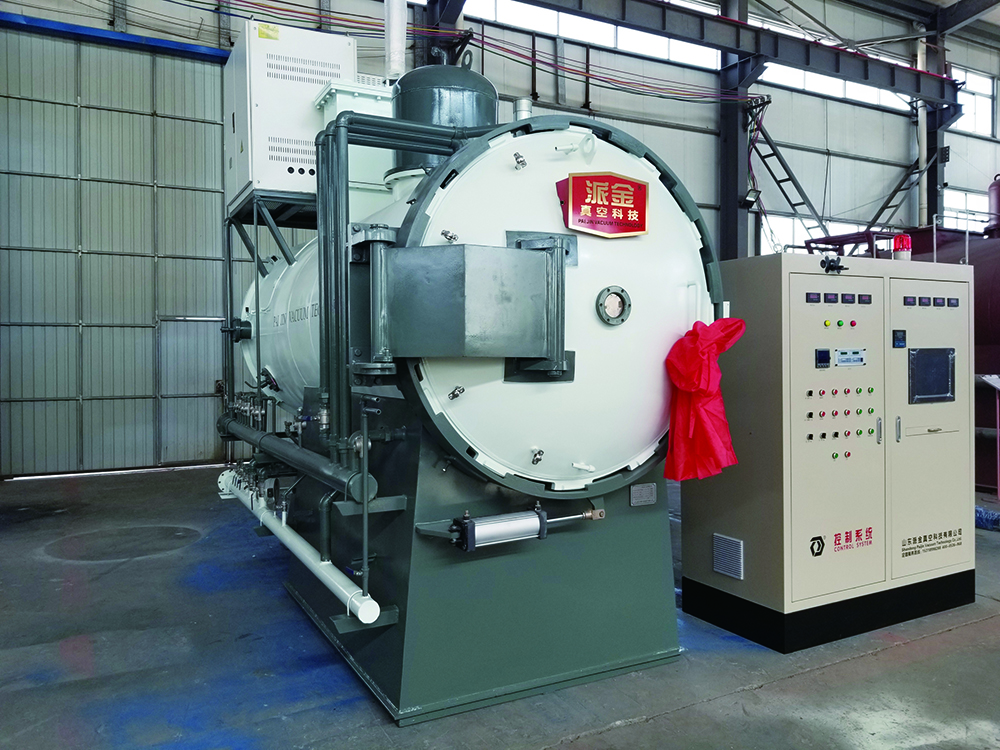Heat treatment is an essential process in industrial manufacturing. It involves heating and cooling metal parts to improve their mechanical properties, such as hardness, toughness and wear resistance. However, not all heat treatments are created equal. Some can cause excessive deformation or even damage parts. This is where vacuum air quenching furnaces come into play.
Vacuum air quenching furnace is a kind of heat treatment equipment, which uses high-pressure gas to heat parts in vacuum and then cools them down. A vacuum is created to prevent any oxidation or contamination from occurring, and a gas (usually nitrogen or helium) is used to quench the part quickly and evenly.
Vacuum quenching is considered one of the best ways to achieve the best balance of hardness and toughness in metal parts. It produces a fine microstructure without surface decarburization or deformation, resulting in excellent mechanical properties and a longer service life. Additionally, vacuum quenching furnaces can handle a wide variety of materials, from steel and stainless steel to aluminum and titanium alloys.
To reap the full benefits of vacuum hardening, you need a reliable, efficient vacuum quenching furnace. A good stove should have the following characteristics:
- High vacuum: Ideally, the furnace should be able to achieve a vacuum of 10^-5 Torr or lower to minimize oxidation and contamination.
- Fast quenching: the furnace should be able to cool the part at 10-50°C/s to achieve the desired microstructure.
- Uniform temperature distribution: The furnace should have a well-designed heating system that distributes heat evenly throughout the furnace to ensure consistent quenching results.
- Advanced control system: The furnace should have a user-friendly control panel allowing precise temperature and gas flow control, as well as monitoring and recording of process data.
At Paijin we offer a wide range of vacuum quenching furnaces that meet these requirements and more. Our furnaces are designed and built using the latest technology and materials by an experienced team of engineers and technicians. We also provide custom solutions to meet your specific needs and requirements.
Some of our most popular models include:
- Vertical vacuum air quenching furnace: the furnace can handle parts up to 2000mm in height and 1500kg in weight, with a maximum temperature of 1350°C and a rapid cooling rate of 30°C/s.
- Horizontal vacuum air quenching furnace: This furnace can process parts with a maximum diameter of 1000mm and a weight of 1000kg, with a maximum temperature of 1350°C and a rapid cooling rate of 50°C/s.
- Multi-purpose vacuum furnace: This furnace can be used for various heat treatment processes such as vacuum quenching, tempering, annealing, brazing, etc., with a maximum temperature of 1300°C and a vacuum degree of 10^-5 Torr.
In conclusion, vacuum air quenching furnaces are an important tool for achieving high quality and consistent heat treatment results. They offer superior performance, efficiency and versatility compared to other heat treatment methods. If you are looking for a reliable and efficient furnace, check out Paijin’s range of Vacuum Air Quenching Furnaces today!
Post time: Mar-28-2023
